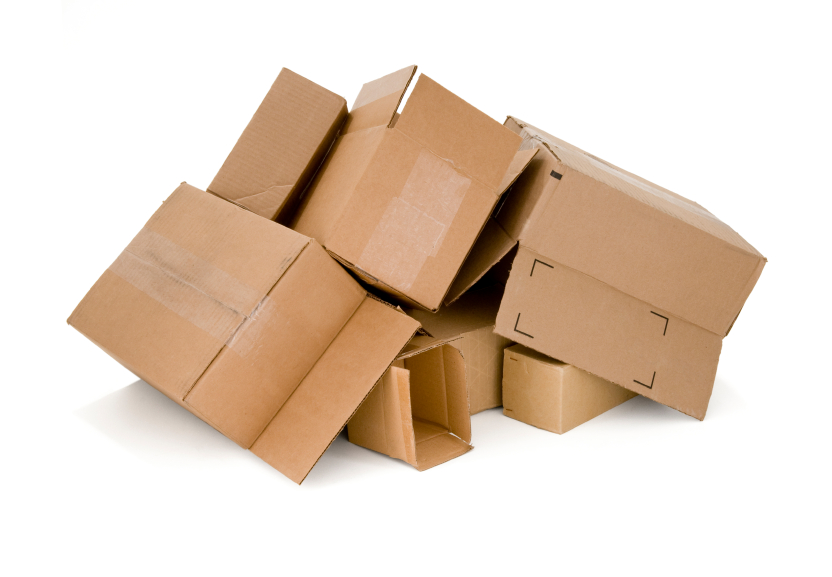
The Chinese first invented paperboard, or cardboard, more than 400 years ago. The first cardboard box was produced in England in 1817. Corrugated cardboard debuted not long after in the 1850s. Because corrugated cardboard is much sturdier than plain paperboard, it became the go-to packaging for shipping products, much like it still is today. According to the
Corrugated Packaging Alliance, cardboard is the single most recycled packaging material today.
Cardboard composition
There are essentially two types of
cardboard: paperboard and corrugated. Paperboard can be made by pasting layers of paper together. It can also be made by pressing layers of wet paper pulp together. There are different types of paperboard, like strawboard (typically used to make books), bending board (a flexible, reliable material), newsboard (a product made from repulped newsprint) or Bristol board (an uncoated, machine-finished paperboard used for technical drawing and illustration).
Corrugated cardboard is made of thin layers of flat cardboard that are molded into a wave shape and sandwiched between two straight layers of thin, flat cardboard. The wavy part is called fluting and the straight outer layers are called liners.
Why we should recycle cardboard
According to the Corrugated Packaging Alliance, more than 80% of U.S. shipments of corrugated cardboard were recovered for recycling. That corrugated cardboard product contains an average of 46% recycled content.
Furthermore, the EPA says, “Commercial establishments generate a large portion of the estimated 31.4 million tons of corrugated cardboard discarded each year. Corrugated cardboard is one of the easiest materials to reduce at the source, reuse, and recycle. Corrugated recycling systems are relatively easy to establish: cardboard is easily identifiable, is often generated in large quantities, and has a ready market. Reducing corrugated cardboard waste is often the first step a company takes to reduce its waste.”
The
recycling process turns used cardboard and paper into a pulp that is transformed into new paper items. During the recycling process, cardboard is soaked in water and then agitated, transforming it back into its original wood pulp state. Any contaminants or foreign matter found in the pulp are removed, and the wood pulp is dried once again and is then pressed into sheets. Cardboard can sustain this type of process approximately five times before it begins to disintegrate, rendering it useless.
These are the benefits of recycling cardboard:
- High recovery rates mean that less material goes into landfills, which results in fewer greenhouse gas emissions from their disposal.
- It reduces the pollution created by papermaking factories.
- The greatest benefit of recycling cardboard is that it save trees every year!
What to look out for
Here are some things you should look out for when
recycling cardboard:
- Staples can be recycled with cardboard.
- You may need to check with your local recycling program to see if you need to remove tape from cardboard before recycling it.
- Avoid recycling cardboard that is stained with food residue or any type of oil. Remove any Styrofoam products that may be attached to cardboard before recycling.
- Make sure to break down large or oversized cardboard pieces to a manageable size. If the piece of cardboard being recycled is too big, it can cause the mechanisms in the recycling truck to jam. Most recycling companies insist that cardboard be broken down into individual pieces no longer than 48 inches and no wider than 24 inches.
- Some recyclers require all boxes must be broken down, pressed flat and secured with twine or placed in a recycling bin or and open paper bag. Consult your service provider.
- Wax-coated cardboard should be bundled separately from uncoated cardboard because the recycling process for wax-coated cardboard is different from uncoated cardboard.
- Cardboard that is saturated with rainwater cannot be recycled.
- If your local recycling program does not accept either paperboard or corrugated cardboard, you may try taking it to your local supermarket. Most supermarkets will accept cardboard boxes.
- Some recycling programs may not accept waxed cardboard (i.e., milk or juice cartons)
Cardboard recycling regulations
To reduce landfill waste, several counties and cities across the U.S. have enacted ordinances to ban or place surcharges on waste loads containing old corrugated cardboard.
In regards to wax-coated cardboard, “Wax coatings cannot be recycled because they do not dissolve in water, so they create problems in the repulping process. The [cardboard] industry has worked diligently to develop recyclable alternatives, many of which are now becoming commercially available. These can be certified repulpable and recyclable by passing an industry-standard testing protocol,” says the Corrugated Packaging Alliance.
Find your nearest cardboard recycling location here. Looking to recycle paperboard? We have locations for that, too!
